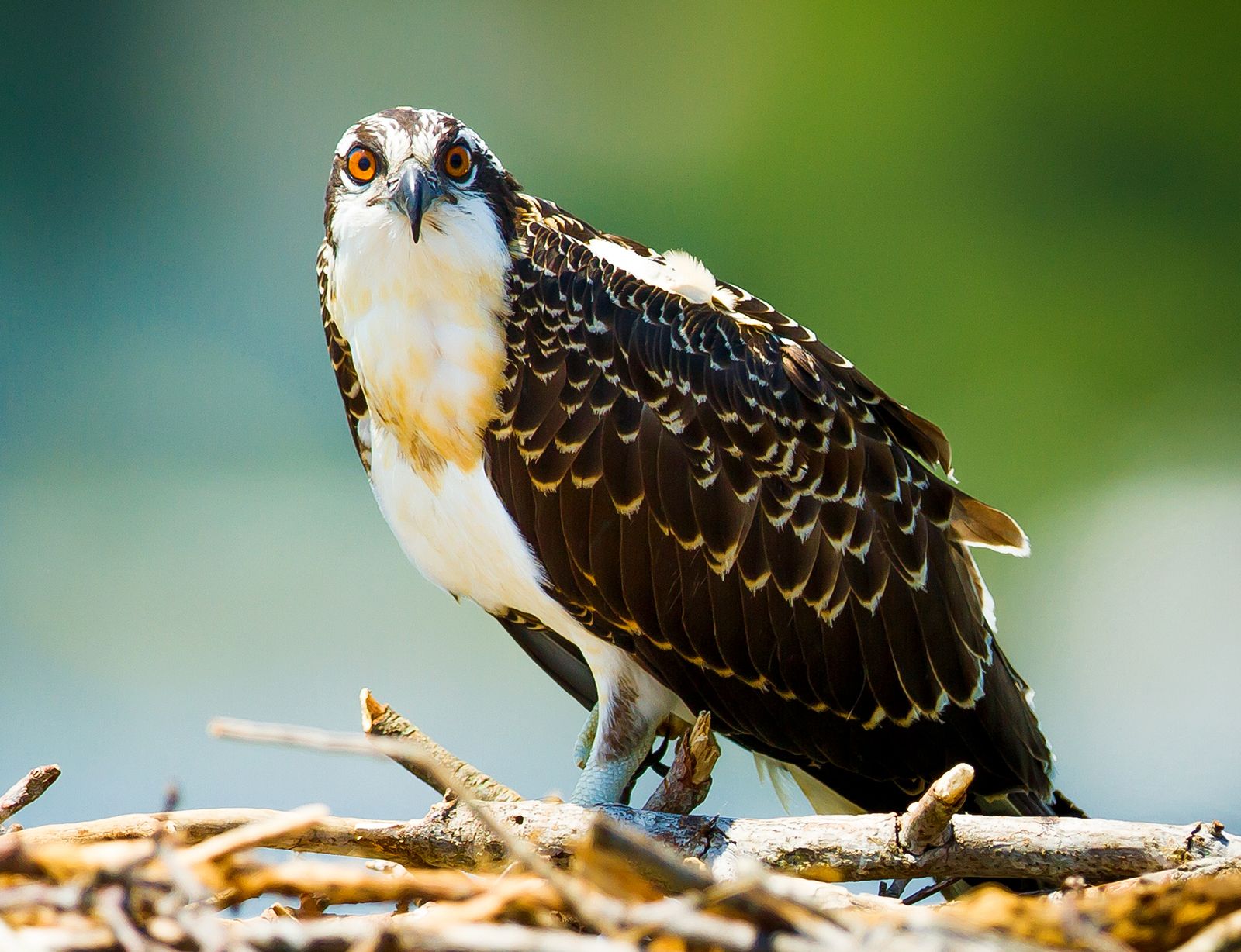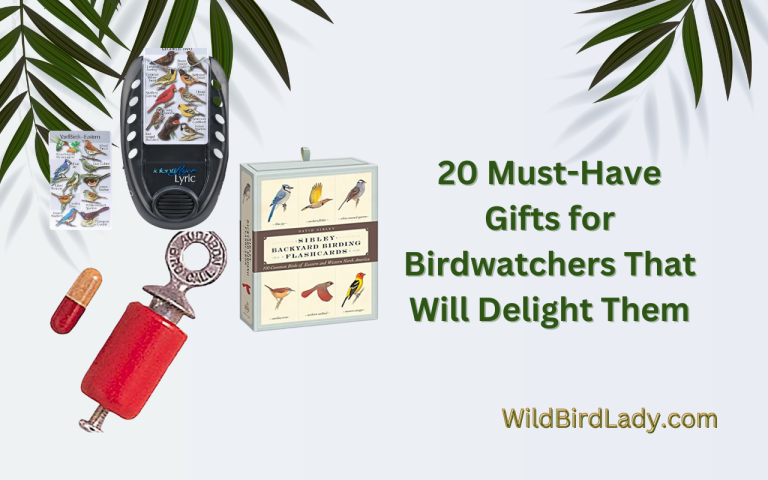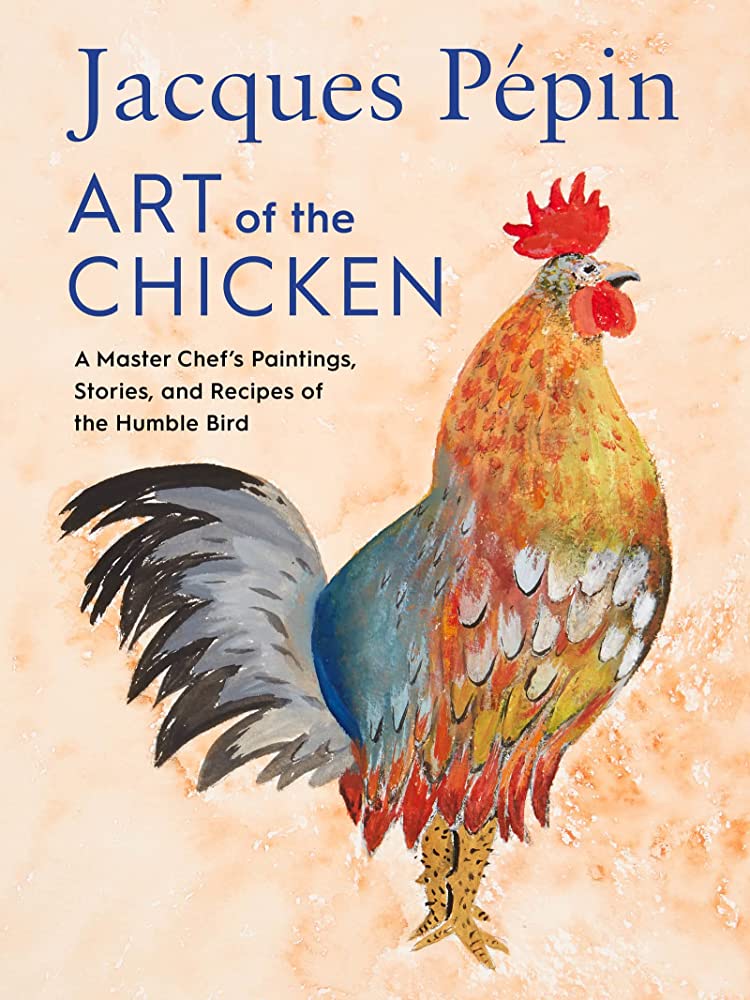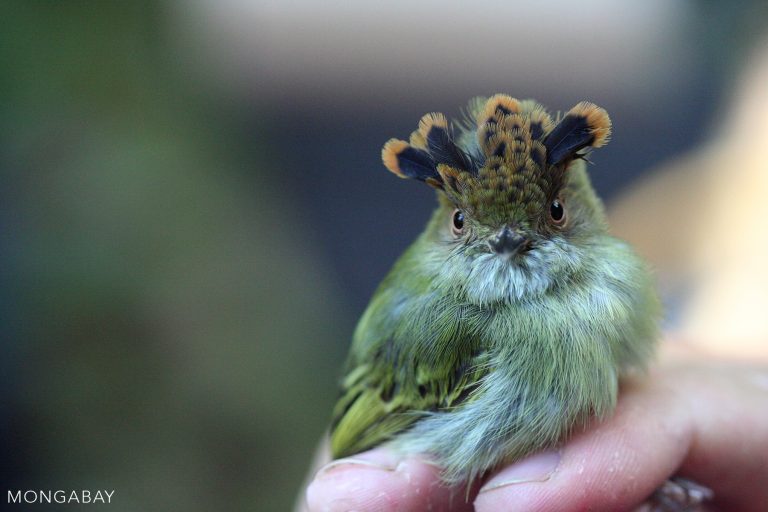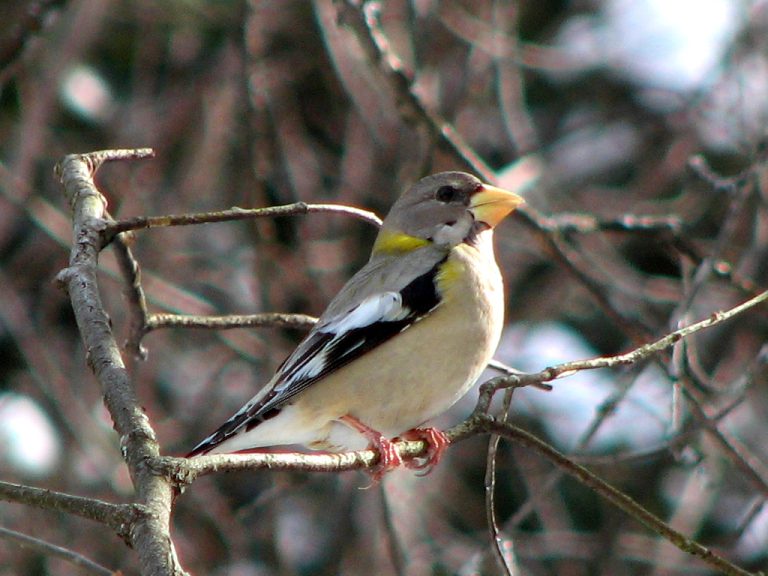Discover the Secrets to Identifying Osprey Feathers
To identify osprey feathers, check if the feathers are light brown on the top and white underneath, with dark bars on the wings and tail. Ospreys are majestic birds of prey that are often seen flying over bodies of water.
These birds have distinctive feathers that can help with their identification. As an avian enthusiast, noting the osprey’s distinct features will help you learn more about this magnificent creature. Identifying osprey feathers can be simple if you know what to look for.
In this article, we’ll go over the complete guide on identifying osprey feathers. From the unique features of the osprey’s feathers to practical tips to observing these creatures in the wild, we will cover everything you need to know to become an expert at osprey feather identification.
Credit: www.reddit.com
The Basics Of Identifying Osprey Feathers
Osprey feathers are a unique and fascinating sight that every bird-watching enthusiast should look out for while exploring nature. These feathers can be identified based on specific physical characteristics, feather anatomy and structure, and their differentiating features from other bird feathers.
Physical Characteristics Of Ospreys
To identify osprey feathers, it is essential to understand some key physical characteristics of ospreys. A few features to take note of are:
- Ospreys are medium-sized birds, and their wingspan ranges from five to six feet.
- They have dark brown feathers on their backs and wings, while their undersides are primarily white or cream-colored.
- Ospreys have a distinctive pattern on their head, comprising a dark stripe extending from their eyes to the back of their heads. Their eyes are also bright yellow.
Feather Anatomy And Structure
Knowing the anatomy and structure of osprey feathers can assist in identifying them from other bird feathers. Here are a few points to remember:
- Osprey feathers have a web-like vane, which is the flat part of the feather. This web-like vane helps in providing lift and gliding to these birds.
- The shaft of the feather runs through the center of the vane. It provides rigidity and structural support to the feather.
- Barbs are small branches stemming from the shaft and play a vital role in holding the feather together.
- The barbs connect to minute hooks called barbules, which attach to one another, forming the triangular shape of each feather.
Characteristics That Differentiate Osprey Feathers From Other Bird Feathers
Osprey feathers are unique, and distinguishing them from other bird feathers can be interesting. Here are some differentiating characteristics to keep in mind:
- Osprey feathers have a dark band running across the tip of their outer web, which distinguishes them from other bird feathers.
- The shape and size of osprey feathers are unique, usually being longer and more slender than other similar bird feathers.
- Osprey feathers are usually found around their nesting sites, so that can also provide a clue to their identity.
Identifying osprey feathers requires some basic knowledge of the physical characteristics, feather anatomy, and distinguishing features. Keep these pointers in mind while exploring the great outdoors, and you are sure to spot some of these magnificent feathers.
Exploring Osprey Feather Types
Ospreys are magnificent birds of prey, renowned for their incredible fishing skills. Whether you are a beginner learning bird identification or an experienced birder, it can be challenging to identify osprey feathers. Each feather type has distinct characteristics that set it apart from others.
In this post, we will explore the different types of osprey feathers and how to identify them based on their physical traits.
Description Of Different Types Of Osprey Feathers
There are three types of feathers that make up an osprey feather.
- Contour feathers: These feathers are large and cover the bird’s wings, tail, and body. Contour feathers are essential for maintaining the bird’s shape and insulation.
- Down feathers: Soft and fluffy, down feathers are found close to the bird’s skin and act as insulation against harsh weather conditions.
- Filoplume feathers: These thin, hair-like feathers grow in and around contour feathers and are believed to be sensory in nature. Filoplume feathers help ospreys detect changes in their feathers’ position and movement during flight.
Key Characteristics Of Each Type Of Feather
To identify an osprey feather, you must understand the key characteristics of each feather type. Here are some essential features that will help you differentiate the three types of feathers:
- Contour feathers: These feathers are pointed at the tip and have a flat vane that provides lift and drag during flight. Contour feathers have barbs that interlock, creating a smooth and streamlined surface, enhancing the bird’s aerodynamics.
- Down feathers: These feathers are soft and have a fluffy shape. Down feathers have a central quill with several branches extending from the top, forming a tuft-like structure. These feathers help insulate ospreys, keeping them warm in cold weather.
- Filoplume feathers: These feathers are thin, have no or few barbs and are often located at the base of contour feathers. They are used by ospreys to maintain the contour feathers’ position and detect any changes in their movement.
How To Identify Each Feather Type Based On Physical Traits
Identifying osprey feathers requires attention to detail and knowledge of their physical traits. Here are some tips on identifying each feather type:
- Contour feathers: Look for the pointed and flat vane at the tip of the feather. The feather’s barbs should interlock to create a smooth and streamlined surface. The feather’s hydrophobic nature also helps keep ospreys dry while fishing.
- Down feathers: Look for the down feather’s soft and fluffy shape, central quill, and the tuft-like structure formed by the branches. Down feathers may also have a bulb at the base of the quill, indicative of oil gland secretion.
- Filoplume feathers: Look for the hair-like thin structure with no or few barbs. Filoplume feathers may not be easy to distinguish from other feathers on the bird’s body, but their location near the base of contour feathers can be a helpful identifier.
By understanding osprey feather types and how to identify them, you can enhance your bird identification skills. Whether in the field or examining feathers, knowing what to look for will make the experience more rewarding and exciting.
Understanding Feather Morphology And Topography
Overview Of Feather Morphological Features
Feathers are intricate structures with varying sizes and shapes that provide vital information about the bird they belong to. Understanding the fundamental morphological features of feathers can help you accurately identify an osprey feather. Here are a few key features to consider:
- Vanes: The two flat surfaces of a feather are called vanes. The dorsal vane faces the bird’s back, and the ventral vane faces the bird’s belly.
- Rachis: The central shaft that runs down the length of a feather is called a rachis. It provides structural support to the vane.
- Barbules: These are tiny branches that emerge from the rachis and across the vanes, holding them together.
- Hooklets: Barbules have tiny hooks called hooklets that interlock with the barbules of adjacent feathers, forming a smooth surface.
Exploring Specific Features That Affect Feather Identification
Now that you understand the fundamental morphological features of feathers, let’s dive deeper into identifying specific features that affect feather identification:
- Shape and size of the feather: The shape, size, and length of feathers are crucial factors in identifying and distinguishing species. An osprey feather typically ranges from 15-22 cm long and has a tapering shape.
- Color pattern: The color pattern on a feather is species-specific and depends on pigmentation and structural coloration. Osprey feathers have a distinctive pattern of dark brown and white.
- Presence of special characteristics: Osprey feathers possess certain features unique to them, including a white band at the tip of the dorsal vane and an internal structure that allows for efficient air-to-water transition while diving.
How Feather Topography Varies By Species
Feather topography refers to the spatial arrangement of vanes, barbs, and barbules on a feather’s surface. Here are some ways feather topography varies by species:
- Feather density: Different species of birds have feathers of varying densities, with water birds having more feathers that aid in insulation and buoyancy. Osprey feathers are relatively dense to provide efficient diving and waterproofing.
- Feather shape: Feather shape can vary from broad and flat to thin and pointed, depending on the bird’s needs. Osprey feathers are flat with tapering ends to provide stability during flight and prevent drag during diving.
- Surface texture: Some birds have special feather structures that aid in sound production, while others have specialized feather arrangements that help with camouflage. Osprey feathers have a smooth surface, allowing water to slide off easily.
By understanding the intricacies of osprey feathers’ morphology and topography, you can correctly identify them and appreciate their importance in the bird’s survival.
Discover The Secrets To Identifying Osprey Feathers
Ospreys are magnificent birds of prey that inhabit coastal areas and freshwater lakes. Their feathers are sought after by bird enthusiasts and collectors due to their unique beauty and exquisite patterns. Identifying osprey feathers may sound challenging for those who lack in-depth knowledge about these birds.
However, with practice and determination, you can master the art of identifying them. In this blog post, we will explore the techniques and best practices for detecting osprey feathers.
Examining Key Identification Challenges
Identifying osprey feathers is challenging due to the similarities between them and feathers of other birds. However, some basic guidelines can assist you in recognizing osprey feathers accurately. Here are some key identification challenges:
- Osprey feathers are sometimes confused with eagle and hawk feathers due to similar wing sizes. However, osprey feathers have a thinner base, indicating their adaptation for catching fish.
- Juvenile osprey feathers look different from adult feathers. It is important to know the difference between the two to identify the feather’s age accurately.
- Osprey feathers have unique color patterns that help differentiate them from other birds. The head feathers are white, and the back and wing feathers have brown and black spots.
Best Practices For Identifying Osprey Feathers
Identifying osprey feathers requires a keen eye for detail and a familiarity with bird anatomy. We highly recommend following these best practices for identifying osprey feathers:
- Be aware of the feather’s shape, size, and texture. Osprey feathers appear thin, broad, and smooth.
- Keep the feather in bright light to identify the colors accurately. Remember, osprey feathers have a white head, black and brown spots on the back, and white tail feathers.
- Be aware of the feather’s location to identify its primary position. Ospreys have two types of feathers: Primary and secondary.
Techniques For Analyzing Feather Features
Analyzing feather features is an essential technique for detecting osprey feathers. Here are the techniques for analyzing feather features.
- Start by examining the feather’s overall shape and size. Osprey feathers have a specific size and shape, which makes them unique and identifiable.
- Osprey feathers have a translucent appearance, which sets them apart from other birds’ feathers.
- Look for distinctive features of osprey feathers, such as the whitish or light-colored shafts of the feathers and their thin bases.
- Be aware of the rachis, barbs, and barbules, which are the feathers’ crucial parts. Osprey feathers have distinct patterns in these parts that make them identifiable.
In conclusion,
Identifying osprey feathers is an art that requires patience, practice, and consistent learning. Keep in mind the identification challenges, best practices, and techniques we discussed in this blog post to become an expert at detecting osprey feathers. With perseverance and determination, you’ll soon be able to distinguish osprey feathers from other birds’ feathers.
Common Misidentifications And How To Avoid Them
Osprey feathers are magnificent to see and even more enchanting to identify. However, the process of identifying these feathers correctly can be tricky, especially if you’re new to the game. It’s a great feeling to differentiate between various bird feathers, but with that also comes the risk of misidentifying them.
We’ll look into common misidentifications of osprey feathers and how to avoid them.
Common Birds That Osprey Feathers Are Often Misidentified As
Osprey feathers have a distinct pattern, yet it is common to misidentify them as other birds’ feathers because of their similarities. Here’s a list of birds that osprey feathers are mostly mistaken for:
- Bald eagles
- Large ravens
- Great horned owls
- Hawks
Even though these birds’ feathers may look similar to osprey, it’s essential to pay attention to the details in the patterns and textures.
How To Differentiate Between Similar Bird Feathers
There are a few key differences between osprey feathers and other bird feathers that are often mistaken for them. Here’s what you need to look for:
- Osprey feathers have a distinctive pattern of alternating light and dark bands running across the feather’s width.
- Bald eagle feathers have a similar pattern of light and dark bands. However, the dark band is usually broader than the light band, unlike in an osprey feather.
- The feathers of large ravens, great horned owls, and hawks are broader and more substantial than osprey feathers. Plus, they have a more random pattern.
Tips For Avoiding Misidentifications
Avoiding misidentifications requires a sharp eye and attention to detail. Here are a few tips to avoid misidentifying osprey feathers:
- Use a bird identification book or online resources to cross-check the feather’s features and identify the bird species correctly.
- Always compare the feather you’re examining to the osprey feather’s features, including its size, pattern, texture, and color.
- Learn the bird’s habits, habitat, and movements to identify the correct feather species.
Now that you know how to avoid misidentifying osprey feathers, you can confidently identify them and enjoy their beauty. With practice and experience, it will become easier to recognize the subtleties in bird feather identification and avoid confusion with similar-looking ones.
Important Dos And Don’Ts Of Osprey Feather Identification
Steps To Take When Identifying Osprey Feathers
Identifying osprey feathers can be tricky, but with careful observation, you can easily recognize these feathers. Here are some steps to follow when identifying osprey feathers:
- Look at the size and shape of the feather: Osprey feathers are typically between 6-12 inches in length and have a distinctive shape, with seven long primary feathers and twelve shorter secondary feathers.
- Observe the color pattern: Osprey feathers have a dark brown or black color on the ends and a white or light brown color near the base.
- Pay attention to the texture: Osprey feathers have a smooth texture and feel soft to the touch.
Best Practices For Handling And Preserving Feathers
Handling and preserving osprey feathers requires some care and attention to ensure the feathers remain in good condition. Here are some best practices to keep in mind:
- Handle the feathers gently: Always handle osprey feathers with care as they are delicate and can be easily damaged.
- Store feathers in a dry place: To preserve the feathers, store them in a dry place away from sunlight and dampness.
- Use acid-free tissue paper: When storing osprey feathers, use acid-free tissue paper to prevent any damage to the feather.
Common Mistakes To Avoid When Identifying Osprey Feathers
When identifying osprey feathers, it’s important to avoid common mistakes that can lead to confusion or misidentification. Here are some common mistakes to avoid:
- Misidentifying other bird feathers: Osprey feathers can be easily confused with feathers from other birds such as eagles and hawks. It’s important to pay attention to the size, shape, and color pattern to avoid misidentification.
- Using improper handling techniques: Improper handling techniques can damage the feathers and affect their preservation. Always handle the feathers carefully and store them in a dry place.
- Not consulting experts: If you’re unsure about the identification of an osprey feather, it’s best to consult experts who can help you with accurate identification to avoid making mistakes.
Frequently Asked Questions On “How To Identify Osprey Feathers”
How Can I Identify Osprey Feathers?
Osprey feathers can be identified by their unique markings; black or brown-tipped feathers, barred tail feathers, and a whitish head. They are also slightly curved compared to other bird feathers and have a distinct pattern of lighter and darker shades.
How Are Osprey Feathers Different From Other Bird Feathers?
Osprey feathers have a distinct pattern of lighter and darker shades with black or brown tips. They are also slightly curved in shape, making them different from other bird feathers. Additionally, osprey tail feathers are barred, while other bird tail feathers are not.
Can I Legally Collect Osprey Feathers?
Osprey feathers are protected under the migratory bird treaty act, making it illegal to collect them without a permit. Violation of this act is a federal offense, and individuals caught can face fines or imprisonment.
How Do Ospreys Use Their Feathers?
Osprey feathers serve several purposes. They provide insulation, protect the bird from the sun and rain, enable silent flight, and act as display feathers during mating rituals. The osprey also uses its feathers to help it hunt by reducing glare and increasing visibility in the water.
Do Ospreys Moult Their Feathers?
Yes, ospreys moult their feathers every year, usually after breeding season. They shed their old feathers and grow a new set to maintain their body’s health and function. This process takes several weeks to complete and requires a lot of energy from the bird.
Conclusion
As nature enthusiasts and birdwatchers, we should be able to identify different bird species by simply looking at their feathers. Osprey feathers can be recognized by their unique color patterns and structure. Once you have mastered the art of identifying these feathers, you’ll be able to appreciate the beauty, elegance, and importance of these birds of prey even more.
The process of identifying osprey feathers may seem daunting at first, but with practice and the right tools, anyone can become an expert. By learning how to identify osprey feathers, you can help protect these magnificent birds and their habitats.
Remember to only collect feathers that have been naturally shed and always keep a safe distance from the birds. We hope this guide has been helpful in your quest to identify osprey feathers, and we encourage you to continue your journey of discovering the wonders of nature.

